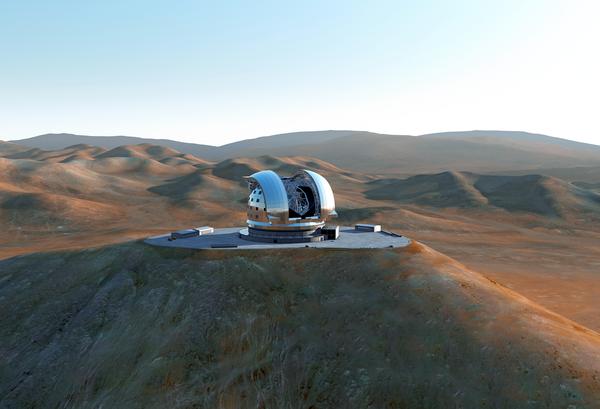Giant telescope will reveal the outer reaches of the universe

Core of a very ancient galaxy © NASA / ESA
The European Extremely Large Telescope Project (E-ELT) has officially been launched. This enormous telescope, with a diameter of nearly 40m, will be built in Chili and will include technologies developed at EPFL.
Tear down that mountain, so we can see the stars! Indeed, the spectacular €1.08 billion project will undoubtedly lop a few meters off the top of Cerro Armazones, in Chili. But it’s well worth it: with the European Extremely Large Telescope (E-ELT) and its principal 39.3 m-diameter mirror, we’ll be able to observe stars and galaxies – both nearby and in the far reaches of the universe - with a level of detail that is unimaginable today.
Georges Meylan, professor and head of EPFL’s Astrophysics Laboratory, represents Switzerland on the advisory board of the European Southern Observatory (ESO). This intergovernmental organization is commissioned to build the giant telescope within the next ten years. The ESO’s official acceptance of the project, this past June, “will allow Europe to occupy the front lines of ground-based astronomical observation for many years to come,” says Meylan.
The characteristics of the project are mind-boggling. “What we call the principal mirror is actually made up of about 800 mirrors placed side by side, forming a giant paraboloid,” he explains. This structure will be housed in a dome that’s large enough to hold Lausanne’s cathedral. Sensitive enough to capture 100 million times more light than the human eye, this amazing telescope will be be able to give us more information on Earth’s sister planets, the exoplanets, as well as more remote objects such as the first galaxies formed shortly after the Big Bang. “These objects make up the visible content of the universe,” Meylan explains. “By unveiling the way they were formed and how they evolved, we’re hoping to be better able to recount the history of the universe.”
Installing the world’s largest observatory in the heart of the Atacama desert, at the summit of a mountain that’s more than 3,000m high, won’t be an easy task. The location, however, has everything going for it: exceptional atmospheric conditions (340 clear sky nights per year), and the close proximity of ESO’s Very Large Telescope (VLT) – 20 km away – where EELT’s technicians will also be based.

EPFL will have a role to play in the construction of this behemoth. “Our research on image deconvolution – that is, making clearer images than those provided by the telescope, notably by correcting for atmospheric perturbations – is cutting edge,” continues Meylan. “We have also proven our expertise with our work on ESA’s Euclid satellite, which identifies the size and shape of remote galaxies. We are also in the running for equipping the E-ELT with imagers operating at near-infrared wavelengths that will permit it to attain new depth records. Finally, we have demonstrated expertise in spectroscopy applied to remote galaxies.”
The project is only just beginning; ESO has not yet chosen who will equip the E-ELT. With Meylan on the board of advisors, EPFL is nonetheless in direct contact and will be ideally positioned to offer solutions. “The observatory should be completed and enter into operation in 2019-2020,” he hopes.